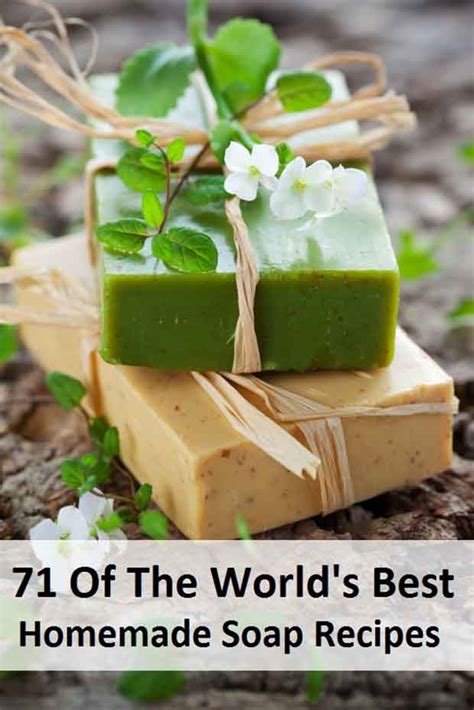Homemade Soap Recipes: A Beginner's Guide to Natural Soap Making
Are you fascinated by the idea of crafting your own soaps? Do you dream of luxurious, fragrant bars tailored to your skin's unique needs? Then you've come to the right place! This guide will walk you through the basics of soap making, providing simple and effective recipes for beginners. We'll explore different methods, ingredients, and techniques to help you create beautiful and functional soaps at home.
Understanding the Soap Making Process: Saponification
Before diving into specific recipes, it's essential to understand the core process: saponification. This is the chemical reaction that transforms oils and fats into soap. It involves combining these oils with a strong alkali, typically lye (sodium hydroxide for bar soap, potassium hydroxide for liquid soap). Safety is paramount when working with lye, so always wear appropriate safety gear, including gloves and eye protection. Proper ventilation is also crucial.
Key Ingredients in Soap Making:
-
Oils and Fats: These provide the moisturizing and cleansing properties of your soap. Popular choices include olive oil, coconut oil, palm oil, castor oil, and shea butter. Each oil contributes unique qualities to the final product; for example, coconut oil creates a hard, bubbly bar, while olive oil adds conditioning properties.
-
Lye (Sodium Hydroxide): The crucial ingredient that reacts with the oils to create soap. Handle lye with extreme caution.
-
Water: Used to dissolve the lye. Distilled water is recommended.
-
Additives (Optional): These enhance the soap's appearance, scent, and properties. Consider adding essential oils for fragrance, herbs for exfoliation, or clays for color and therapeutic benefits.
Simple Soap Recipes for Beginners:
Here are two beginner-friendly recipes to get you started:
1. Classic Castile Soap:
This recipe uses primarily olive oil for a gentle and moisturizing bar.
Ingredients:
- 24 ounces Olive Oil
- 6.3 ounces Lye (Sodium Hydroxide)
- 16 ounces Water (Distilled)
Instructions: (Always consult detailed instructions from reputable soap-making sources before attempting this process. This is a simplified overview.)
- Carefully and slowly add the lye to the water (never the other way around). Stir gently until dissolved. The mixture will heat up.
- Allow the lye solution to cool to approximately 100-110°F (38-43°C).
- Gently heat the olive oil to the same temperature.
- Slowly pour the lye solution into the oil, stirring constantly with a heat-resistant spatula.
- Continue stirring until the mixture reaches a "trace," meaning it thickens enough to leave a visible trail on the surface when you drizzle some from your spoon.
- Pour the mixture into your mold and cover.
- Allow the soap to cure for 4-6 weeks in a cool, dry place. This allows the saponification process to complete and the soap to harden.
2. Coconut-Olive Oil Blend Soap:
This recipe combines coconut oil and olive oil for a balance of hardness and moisturizing properties.
Ingredients: (Adjust the ratios to your preferences. Numerous online lye calculators are available to assist with accurate measurements based on your chosen oils)
- 12 ounces Olive Oil
- 12 ounces Coconut Oil
- 5.8 ounces Lye (Sodium Hydroxide)
- 15 ounces Water (Distilled)
Instructions: Follow the same steps as the Castile soap recipe, ensuring that both the lye solution and oil mixture are at a similar temperature.
Tips for Success:
- Accurate Measurements: Precise measurements are crucial for successful soap making. Use a kitchen scale.
- Safety First: Always wear protective gear and work in a well-ventilated area.
- Patience is Key: Allow the soap to cure properly to ensure complete saponification.
- Experiment and Have Fun!: Once you've mastered the basics, experiment with different oils, additives, and scents to create your own unique soap creations.
Remember to research thoroughly and prioritize safety before attempting any soap-making recipes. Enjoy the process of creating your own beautiful and functional soaps!
